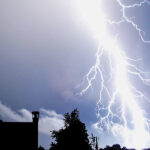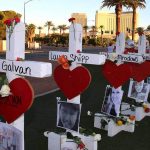Bumping into an old tour mate and uttering a single word can recall a whole slew of events about a day, venue, person or even an entire tour. This shorthand form of communication develops out of the day-to-day way efficient and expeditious crews talk to one another as a tour progresses.
Sadly, one word now represents tragic events that are becoming more commonplace in the world, Orlando, Paris, Aurora, Virginia Tech, Sandy Hook, Ft. Hood, Columbine.
The take-away message of active shooter incidents occurring at locations as diverse as a nightclub, movie theater, university, military installation, and elementary school, just to list the five worst, is that none of us has the luxury of complacency.
Acts of violence at live entertainment venues are certainly not new occurrences, but they have become more frequent and lethal — the “New Normal.” Preparing for the worst has become a necessary reality. The question is, how to do so?
One is Too Many
The Event Safety Alliance (ESA), the organization founded for the promotion of current, expert-developed information relevant to our industry, released a document called “Response To Orlando: One is Too Many” immediately following the tragedy at the Pulse Nightclub where a shooter left 49 dead and 53 injured before he was killed by police. For complete transcript, see plsn.me/ESA-Orlando.
“It is the nature of the threat that complicates prevention,” says Jim Digby, ESA founder and chairman. “When one erects a structure, the potential points of failure and behavior are foreseeable. Human beings, on the other hand, are far less predictable. Most entertainment venues have, to date, done an excellent job preparing for reasonably-anticipated threats – it’s just that the threat of external violence has now evolved faster than the industry’s ability to assess and respond.”
An excerpt from the ESA’s “One is Two Many” response to Orlando states: “Like the equally senseless death of Christina Grimmie just three miles away the night before, as well as the attacks in Paris last November, incidents like these show that live event venues are no more immune from active shooters than any other public place.”
The document further reveals the increase in frequency as recorded by the Department of Justice (DOJ), which recorded 160 active shooter incidents in the U.S. from 2000 through 2013. During that period, such incidents more than doubled in frequency annually.
My personal experience with violence and guns at live events goes further back than the DOJ’s record keeping. While doing tours in the late ‘80’s featuring multiple acts, tension between groups would flare, often going far beyond the bragging rights of who did the best show. There was no real “plan” when guns were fired other than light the place up and duck.
Despite tour security efforts to contain one such incident, a specific individual targeted almost got beat to death while another was killed by gunshot.
While still relatively rare, compared to the number of shows staged worldwide, there’s no way to tell, in advance, where a deranged mind will lash out. “Unfortunately, there is no single, simple, or foolproof solution to this problem,” Digby says. “Preparing for the ‘new normal’ will require a variety of preventative measures and near daily reassessment of the threat and our environment. It’s going to require those working in the industry to be continuously vigilant, open to change, and possibly sacrifice some comfort and convenience for the sake of safety.”
The first step, Digby notes, is to review — and heed — existing security protocols. “Security measures some have viewed as “loose” for crew should be given renewed attention. No credentials, propped doors, and unquestioned access to all areas of the venue…these should be unacceptable. We’re asking more of event security than ever before, we should be helping them do their job successfully.”
The ESA document also offers six areas of action for prevention and safe response. Some, such as X-ray machines and magnetometers, the ESA points out, are tools, not solutions. They do not believe simply adding technology makes a meaningful difference without a well-trained workforce and the ready availability of professional responders.
Serious consideration to the recommendations of those who will be coming to our aid when and if such an incident occurs needs to be given. As general guidance to members of the public who may find themselves in the midst of a violent situation, the U.S. Department of Homeland Security (DHS) advises everyone should try to work through the following steps in the order of run, hide and fight.
Run, Hide, Fight
“Run away from the shooter if there is a safe way to exit; take as many people with you as is safe. Hide if there is no obvious way to exit; go some other place that is less exposed. If you cannot run to safety and there is no good place to hide, then stay put and prepare to Fight with whatever is available.”
This is not a perfect solution, but it is easy to remember; much like “stop, drop and roll” you learned in school, and provides some general guidance.
Likewise, regardless of the type of event, no one should go to work thinking themselves immune from the threat of gunmen entering their site with deadly intent.
Charlie Hernandez, a member of the ESA’s Board of Directors, adapted the “Run, Hide, Fight” protocols into a guidance document for his crew with tips like silencing your cell phone if you are in hiding and keeping your empty hands easily visible with outstretched fingers as police rush into a chaotic scene with deadly force. (To see the adapted “Run-Hide-Fight” document, go to plsn.me/Run-Hide-Fight. It is not an official ESA document; it is simply an example of what one production manager has been doing.)
Most emphatically, they believe there is no scenario in which a live event space is safer by adding more guns.
“We must also remind ourselves,” says Digby, “that we are not in the business of counter-terrorism. We should seek to engage those who have the knowledge and experience in these matters and avoid the temptation to create solutions in a vacuum.”
This is why ESA has been conducting research on exactly what actions crew can take during this type of emergency. As part of this information gathering, the ESA recently attended a meeting in Washington, DC of the National Capital Region Sports and Entertainment Venue Working Group. Members of the Joint Terrorism Task Force (JTTF), which is comprised of the FBI, DHS, Capital Police, and representatives of other federal and local law enforcement agencies, as well as representatives from a number of major venues also attended.
According to Dr. Don Cooper, executive director of ESA, the consensus of this group was that the initial actions taken by crew in an active shooter scenario should be the same as the initial actions taken during any emergency.
These being: turn up all lights (illuminate the space as much as possible), turn off the music (make it quiet), turn off any flashing lights or visual distractions, and deliver a pre-prepared emergency evacuation message to the crowd promoting calm, deliberate, and immediate action.
“These actions not only quickly signal to patrons that something is happening, they give emergency responders the best environment in which to perform their important work,” says Cooper. “Among a number of other benefits, these measures are consistent with procedures for other emergencies, which make them easy to remember.”
The ESA believes that knowing what to do in an active shooter situation is just one of many scenarios event professionals must be prepared to address during the safe execution of an event. Statistically, many other types of emergencies are far more likely (e.g., fire, medical emergency, severe weather, etc.), and plans for all of these should be in place.
Unfortunately, says Dr. Cooper, “the list of contingencies now needs to include a plan for ‘active shooter.’”
The Event Safety Alliance cannot identify a specific moment when it became imperative for event professionals to address public violence — it hardly matters if it was Sandy Hook or Aurora in 2012, Paris last year, or Orlando. What matters now is that, in addition to expressing our heartfelt condolences for those who have suffered, we raise our own guard as an industry in order to help protect our friends, our families, and ourselves.
For more information, visit ESA’s website at www.eventsafetyalliance.org.

